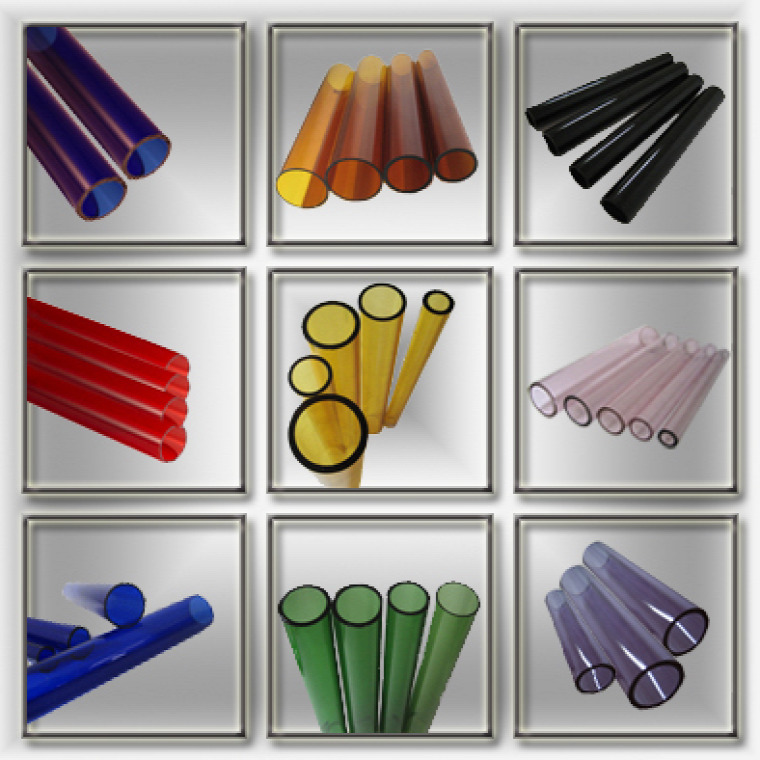How to distribute Glass tubes and rod?
Distributing Glass Tubes and Rods: A Technical Guide
Distributing glass tubes and rods may seem straightforward, but it requires careful consideration of various factors to ensure the safe and efficient handling of these delicate materials. Glass tubes and rods find applications in a wide range of industries, including laboratory equipment manufacturing, pharmaceuticals, lighting, and artistic glasswork. In this technical article, we will delve into the key aspects of distributing glass tubes and rods, from packaging and transportation to quality control and compliance.

Packaging Considerations
Protective Materials
Proper packaging is essential to prevent breakage and ensure that glass tubes and rods arrive at their destination intact. The first layer of defense is the choice of packaging materials. Foam inserts, bubble wrap, or foam padding can provide excellent cushioning against shocks and impacts during transit. Glass packaging must be designed to absorb kinetic energy and distribute it evenly to minimize the risk of breakage.
Tubing Holders
For longer glass tubes or rods, consider using holders or racks designed to keep them secure during transportation. These holders can prevent excessive bending or flexing that might otherwise cause stress fractures.
Inner Packaging
Within the primary packaging, such as boxes or tubes, consider individual wrapping for each glass tube or rod. This added layer of protection can prevent abrasion between items and reduce the chances of scratching or chipping during transit.
Labeling
Proper labeling of packages is crucial for both identification and handling instructions. Clearly mark fragile items, specify the orientation in which the glass tubes or rods should be kept, and include handling precautions. Additionally, include information about the contents, such as dimensions, material type, and any special instructions.
Transportation and Handling
Carrier Selection
Choosing the right carrier is a critical decision. Select a carrier with a track record of handling fragile and sensitive items with care. Glass tubes and rods should ideally be transported by carriers experienced in shipping delicate materials.
Insurance
Consider insuring your shipments, especially for high-value or custom glass items. Insurance can provide financial protection in case of damage or loss during transit.
Temperature Control
Extreme temperatures can weaken glass materials and increase the risk of breakage. Ensure that the transport vehicle is climate-controlled if necessary, especially during hot or cold weather.
Shock and Vibration
Minimize the risk of breakage by avoiding sudden shocks and vibrations during transportation. Adequate packaging and securing the glass tubes or rods within the containers are crucial.
Quality Control
Pre-shipment Inspection
Before distributing glass tubes and rods, conduct a thorough quality inspection. Check for any defects, such as cracks, scratches, or impurities, and remove any items that do not meet the quality standards.
Documentation
Maintain detailed records of each shipment, including item descriptions, quantities, and quality assessments. This documentation can be invaluable for resolving any disputes or discrepancies that may arise during distribution.
Quality Assurance
Implement a comprehensive quality assurance program to ensure that the glass tubes and rods meet industry standards and customer expectations. Regularly inspect production processes and materials to identify and address any potential issues.
Compliance and Regulations
International Regulations
If distributing glass tubes and rods internationally, be aware of customs regulations and import/export requirements. Compliance with international standards, such as ISO (International Organization for Standardization) or ASTM (American Society for Testing and Materials), may be necessary to meet the regulatory requirements of different countries.
Safety Data Sheets (SDS)
Provide Safety Data Sheets (SDS) for any glass materials that may pose health or safety risks. SDS should include information on handling, storage, and emergency procedures.
Environmental Regulations
Adhere to environmental regulations governing the disposal and recycling of glass materials. Proper disposal methods can minimize the environmental impact of glass distribution.
Customer Support and Communication
Customer Education
Educate customers on the proper handling and storage of glass tubes and rods. Provide guidelines and best practices to prevent accidents and breakage.
Communication Channels
Establish clear communication channels for customers to report any issues or concerns regarding the delivered glass items. Promptly address and resolve any customer inquiries or complaints.
Conclusion
Distributing glass tubes and rods is a complex process that requires meticulous attention to detail, from packaging and transportation to quality control and compliance with regulations. By implementing best practices and maintaining a commitment to quality and safety, distributors can ensure that glass materials reach their destinations intact and ready for their intended applications. Effective distribution not only preserves the integrity of the glass products but also builds trust with customers and contributes to the success of industries relying on these critical components.



